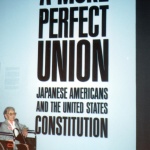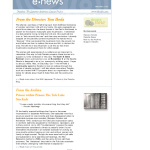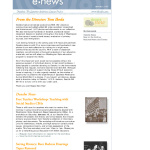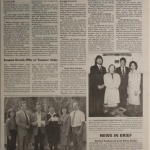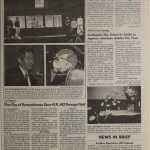Japanese American National Museum
First museum established to preserve, interpret and share the story of the Japanese American experience. Founded in 1982 in Los Angeles's Little Tokyo with the community-based purpose of sharing firsthand accounts of Japanese Americans to a national and international audience, it emerged in the midst of the ongoing movement for redress and reparations .
Founding Years
During the early 1980s, the board of directors of Little Tokyo-based Merit Savings, led by its president Bruce T. Kaji, initiated the concept of an industrial complex with a museum at its center to be built at the corner of First and Alameda Streets in a redeveloping Little Tokyo. Eventually, plans fell through, but the idea of a permanent exhibition to tell the story of the war years as experienced by Japanese Americans was germinated. At the same time, an exhibition was being discussed by the 100th/442nd Veterans Association led by Col. Young Oak Kim and Buddy Mamiya, which subsequently put together a media exhibition about Nisei soldiers with the help of Nancy Araki, then with the media arts organization Visual Communications. These two groups joined forces, and together with various other Little Tokyo community leaders held their first fundraiser in 1982. The California State Senate, led by State Senator Art Torres, provided necessary start-up funding of $750,000, which in turn led to a $1,000,000 grant from Los Angeles's Community Redevelopment Agency and a lease from the City of Los Angeles of the Nishi Hongwanji Buddhist Temple for the price of $1 per year. In 1985 the Museum was incorporated as a private, nonprofit organization, and Nancy Araki was hired as its first staff person. Irene Hirano, the first executive director, was hired in 1988. A total of $13 million was raised to renovate the Nishi Hongwanji Buddhist Church into what is now called the Historic Building.
The National Museum was to open April 30, 1992, with its first exhibition Issei Pioneers: Hawai'i and the Mainland, 1885-1924 . On the eve of the grand opening, civil racial unrest erupted in the streets of Los Angeles, delaying the public opening to May 15, and the theme of "Hand in Hand" was used to indicate its multiethnic and multicultural emphasis.
One of the Museum's landmark exhibitions in its first year was America's Concentration Camps: Remembering the Japanese American Experience , which eventually traveled to New York's Ellis Island. Though plagued by controversy over the use of the term "concentration camp," the exhibition opened to general critical praise for its handling of artifacts and documentation from within by actual camp survivors.
The inaugural year also saw the formation of the National Partnership Program, a community-based program to extend the National Museum's outreach, resulting in such traveling exhibitions as From Bentō to Mixed Plate: Americans of Japanese Ancestry in Multicultural Hawai'i and Regenerations: Rebuilding Japanese American Families, Communities and Civil Rights in the Resettlement Era .
Building the Pavilion
A phase II campaign to raise monies and pledges totaling $45 million to construct a state-of-the-art building to house its growing collection resulted in the Gyo Obata-designed Pavilion building that opened on January 23, 1999. Housing a national resource center, media arts center, and world's largest collection of Japanese American artifacts, the 85,000 square-foot building became the permanent home to its signature exhibition, Common Ground: The Heart of Community , chronicling 130 years of the Japanese American experience.
Significance
Since its opening, the National Museum has featured exhibitions with such noted artists as Isamu Noguchi , Henry Sugimoto, Toshiko Takaezu, Ruth Asawa, and Allen Say. It has also focused on community history through such exhibitions that highlighted sports, taiko, landscape gardening, and the multiethnic community of Boyle Heights. The National Museum has also sponsored national conferences in Little Rock, Arkansas, and Denver, Colorado, to provide educational leadership and guidance to outlying communities.
As the first ethnic-based institution of its kind, the National Museum has been lauded for its depiction of Japanese American history and culture from the previously untold perspective of those who lived and created it, even though the limitations of this perspective have been observed by some critics.
For More Information
Japanese American National Museum. http://www.janm.org .
Kaji, Bruce T. Jive Bomber: A Sentimental Journey . Los Angeles: Kaji & Associates, 2010.
Kikumura-Yano, Akemi, Lane Ryo Hirabayashi and James A. Hirabayashi eds., Common Ground: The Japanese American National Museum and the Culture of Collaborations . Colorado: University Press of Colorado, 2005.
Kurashige, Lon Yuki. "America's Concentration Camps: Remembering the Japanese American Experience." The Journal of American History 83.1 (Jun. 1996): 160-62.
Murray, Alice Yang. Historical Memories of the Japanese American Internment and the Struggle for Redress . Stanford: Stanford University Press, 2008.
Nishime, LeiLani. "Communities on Display: Museums and the Creation of the (Asian) American Citizen." Amerasia Journal 30.3 (2004-2005): 40-60.
Yoo, David. "Captivating Memories: Museology, Concentration Camps, and Japanese American History." American Quarterly 48.4 (Dec. 1996): 680-699.
Last updated Oct. 30, 2021, 5:53 p.m..

